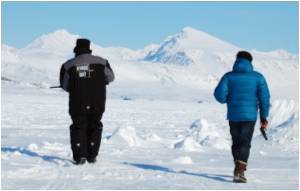A NASA-led study shows some alarming depletion of the ozone layer above the Arctic last winter and spring.

The researchers found the amount of ozone destroyed in the Arctic in 2011 was comparable to that seen in some years in the Antarctic, where an ozone “hole” has formed each spring since the mid 1980s. The stratospheric ozone layer, extending from about 15 to 35 kilometres above the surface, protects life on Earth from the sun’s harmful ultraviolet rays.
The scientists found that at some altitudes, the cold period in the Arctic lasted more than 30 days longer in 2011 than in any previously studied Arctic winter, leading to the unprecedented ozone loss. Further studies are needed to determine what factors caused the cold period to last so long.
The Antarctic ozone hole forms when extremely cold conditions, common in the winter Antarctic stratosphere, trigger reactions that convert atmospheric chlorine from human-produced chemicals into forms that destroy ozone. While the same ozone-loss processes occur each winter in the Arctic, the generally warmer stratospheric conditions there limit the area affected and the time frame during which the chemical reactions occur. This means there is generally far less ozone loss in most years in the Arctic than in the Antarctic.
To investigate the 2011 Arctic ozone loss, University of Toronto physicist Kaley Walker and scientists from 18 other institutions in nine countries (United States, Germany, The Netherlands, Russia, Finland, Denmark, Japan and Spain) analyzed a comprehensive set of measurements. These included daily global observations of trace gases and clouds from NASA’s Aura and CALIPSO spacecraft; ozone measured by instrumented balloons; meteorological data and atmospheric models. The University of Toronto team contributed to the balloon-borne data with measurements from Eureka, Nunavut, located at 80 ºN (1,100 km from the North Pole). The team was participating in a Canadian Space Agency-funded project making springtime measurements to verify the performance of a Canadian satellite called the Atmospheric Chemistry Experiment (ACE).
“In the 2010-11 Arctic winter, we did not have temperatures that were lower than in the previous cold Arctic winters,” said Walker. “What was different about this year was that the temperatures were low enough to generate ozone-depleting forms of chlorine for a much longer period of time. Arctic ozone loss events such as those observed this year could become more frequent if winter Arctic stratospheric temperatures decrease in future as the Earth’s climate changes.
Advertisement
Although the total amount of Arctic ozone measured was much more than twice that typically seen in an Antarctic spring, the amount destroyed was comparable to that in some previous Antarctic ozone holes. This is because ozone levels at the beginning of Arctic winter are typically much greater than those at the beginning of Antarctic winter.
Advertisement
Source-Medindia






